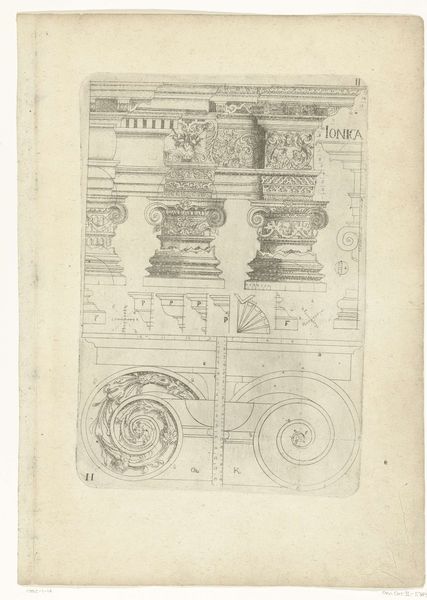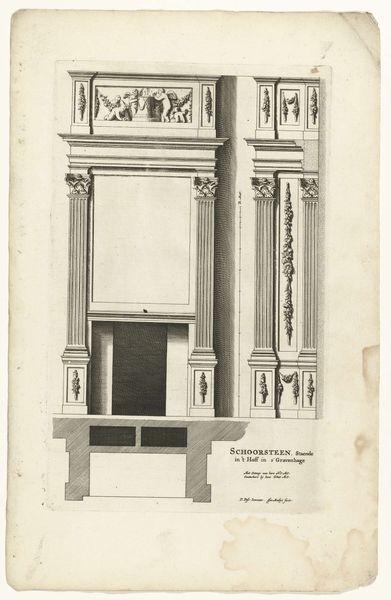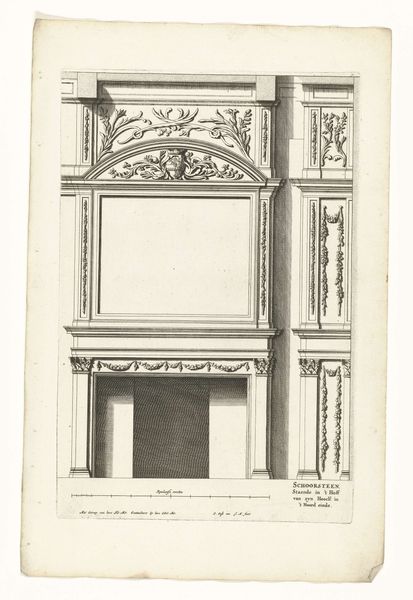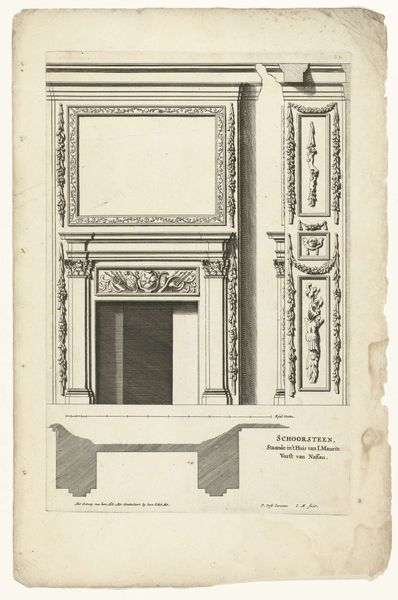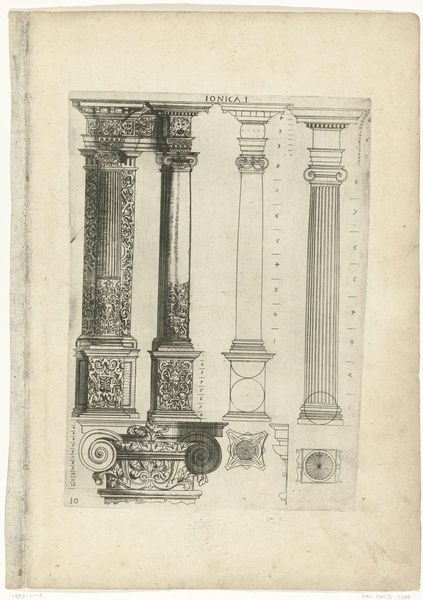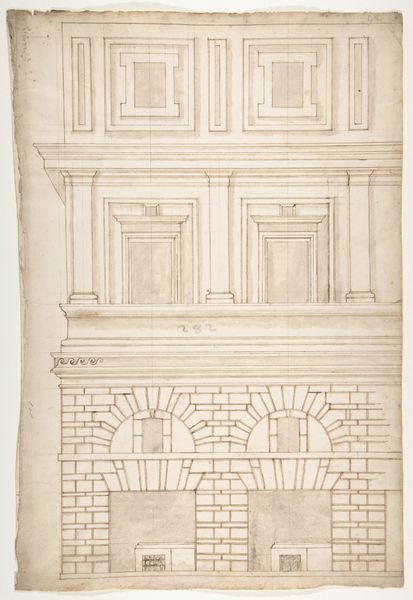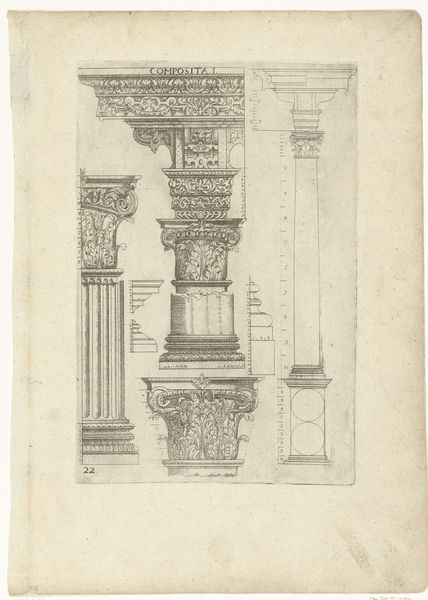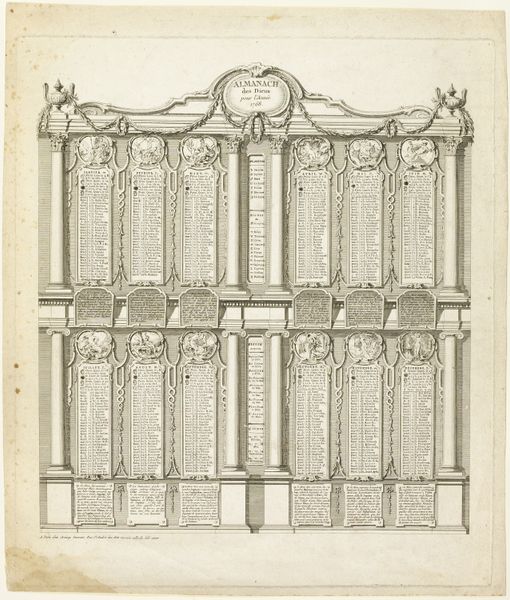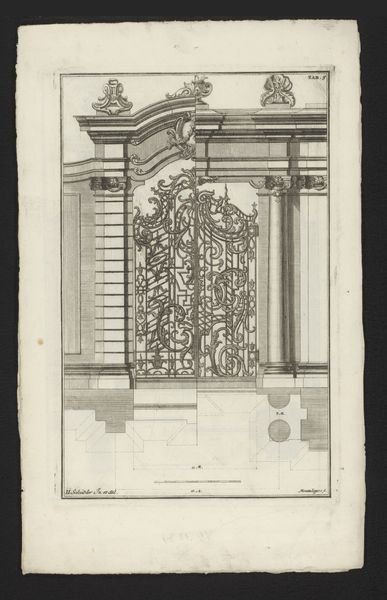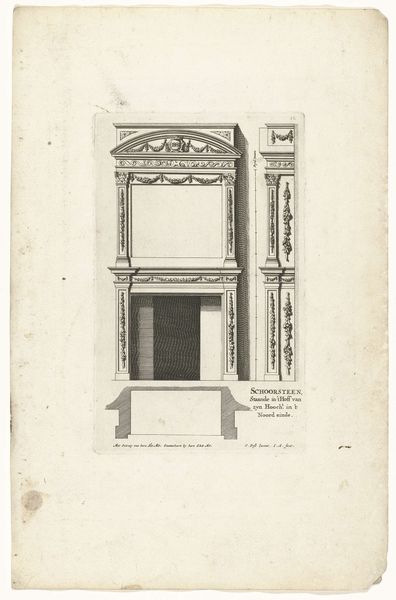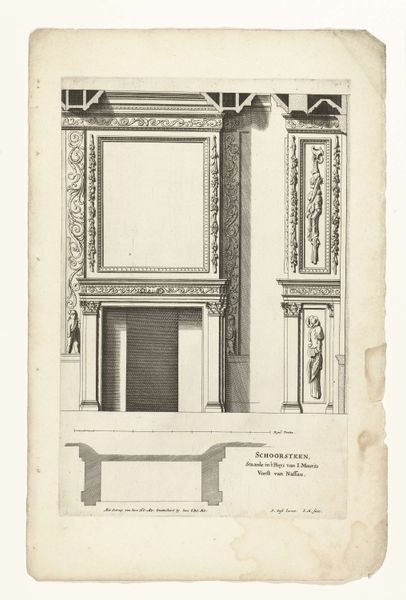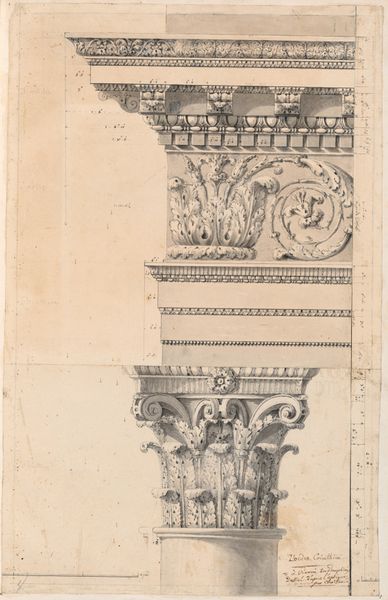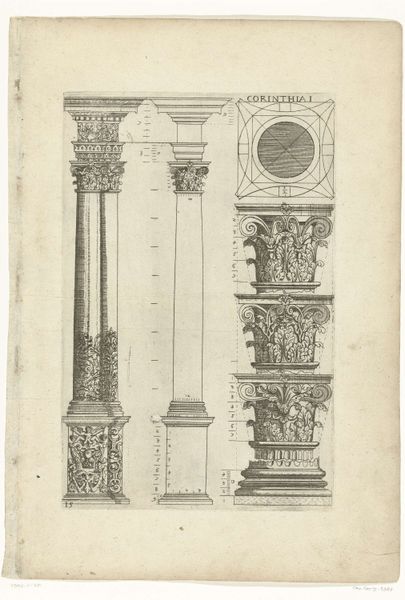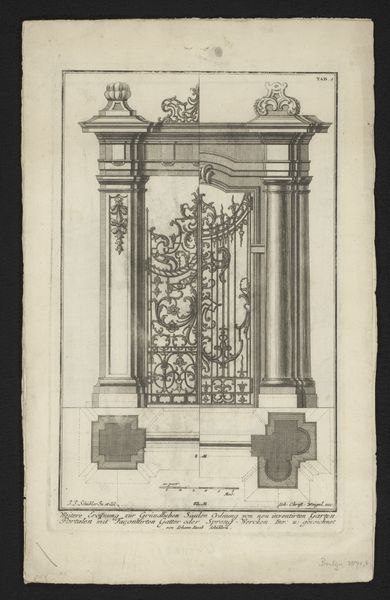
drawing, print, engraving, architecture
#
drawing
# print
#
etching
#
form
#
11_renaissance
#
line
#
engraving
#
architecture
Dimensions: height 272 mm, width 197 mm
Copyright: Rijks Museum: Open Domain
Curator: Here we have "Vier Toscaanse zuilen met voetstukken," or "Four Tuscan Columns with Pedestals," an engraving from 1610. Notice how each column is meticulously rendered, offering a variety of surface treatments. Editor: The immediate impression is one of stark precision. The lines are so clean, so exact. It's like peering into the mind of the architect, witnessing the very essence of form and structure being laid bare. There’s a real sense of controlled visual space, do you agree? Curator: Absolutely. Consider the socioeconomic context of the time; the print would have functioned as both a template and an aspirational design. These were likely meant to inform and standardize building practices, contributing to a visual language of power and order for burgeoning nation-states. Editor: True. I can see that the forms, while rigidly defined, are far from neutral. The composition of simple shapes suggests mathematical ratios—perhaps an investigation of how architectural structure symbolizes stability, an important cultural idea at the time. Curator: The engraving and etching techniques employed serve a didactic purpose, don't you think? Note how the precise lines allowed for relatively easy reproduction and dissemination across workshops, standardizing craftsmanship. The shadow, too, serves not only an aesthetic function but also demonstrates dimensionality in design. Editor: The textures certainly lead me to think about more than just construction. Look how each is decorated and seemingly distinct; one column displays smooth faces whereas another presents complex protruding embellishments. Curator: So it's the difference between raw material and processed commodity, perhaps? That kind of thinking can certainly apply to the means by which architectural aspirations are fulfilled. Editor: This has truly been an enriching examination; the interplay of precision and design serves not only as a technical diagram, but a time capsule for the culture that produced it. Curator: Indeed. "Four Tuscan Columns" reflects how architectural drawings provide valuable insights into social dynamics as well as the craft, creativity, and labor embedded within built spaces.
Comments
No comments
Be the first to comment and join the conversation on the ultimate creative platform.
